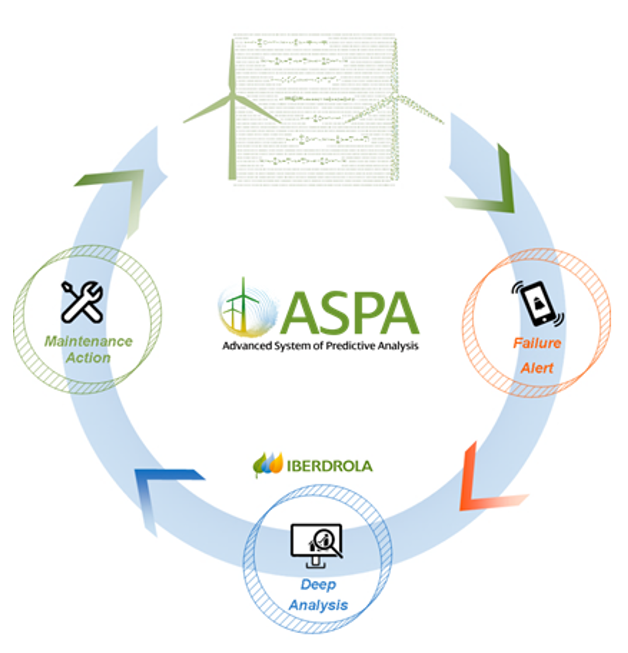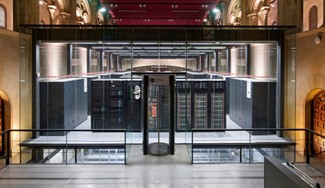
Blog #9

DIGITALIZATION OF RENEWABLE GENERATION
Maria Luz Cruz Aparicio – IBERDROLA
METEOFLOW- Machine learning & Big Data
ASPA- Digital Twins


The Wikinger offshore wind farm is one of the facilities selected for implementing the Romeo project.
ROMEO Project (Internet of Things)
The Romeo Project (Reliable OM decision tools and strategies for high LCoE reduction on offshore wind) aims to develop advanced technological solutions that enable the operation and maintenance costs (O&M) of offshore wind power facilities to be reduced. A flexible and interoperable Cloud and Internet of Things (IoT) platform will provide an advanced analytics ecosystem for failure diagnosis and prognosis models to better understand the real time behaviour of the main components of WTGs under operational conditions.
SEDAR project (High-Resolution Wind Power Simulation)

MareNostrum, the supercomputer used during the development of the project (50,000 processors)

Renewable Energy Operations Centre (CORE), Portland (US)
Renewable Energy Operating Centre (CORE)- Internet of Things
Thanks to the technology Internet of Things (IoT), Iberdrola has deployed a technology to monitor and operate renewable generation facilities from a single dispatch center called CORE. Currently, Iberdrola has four Centers, in Toledo (Spain), Portland (USA), Glasgow (UK) and Río de Janeiro (Brazil). +5 million signals from 11k wind turbines.
- The Toledo Renewable Energy Operations Centre, a pioneer in the sector, provides service to 230 wind farms and 70 mini-hydro power stations, with an installed capacity of 8,200MW, 24 hours a day, 365 days a year. It handles around 800,000 signals from 6,208 wind turbines in eight countries.
- In Portland, the centre has become the most advanced renewable energy facility in the US, handling around 2,000,000 signals from some 3,526 of the company’s wind turbines in that country, with an installed capacity of 6.730MW.
- In Glasgow, Iberdrola monitors and control more than 1,300 wind turbines (on-shore and off-shore), a total of 2.660 MW installed power from 36 wind farms located in UK and Germany. In total more than 500,000 online variables.
- The CORE in Río de Janeiro (Brazil) was opened in 2019 and operates 516 MW of wind energy distributed across 14 wind farms.
Additionally, a fifth CORE will open in 2020 to manage the group’s hydraulic plants — a task currently shared by four centres — paving the way for large hydro in the CORE platform


